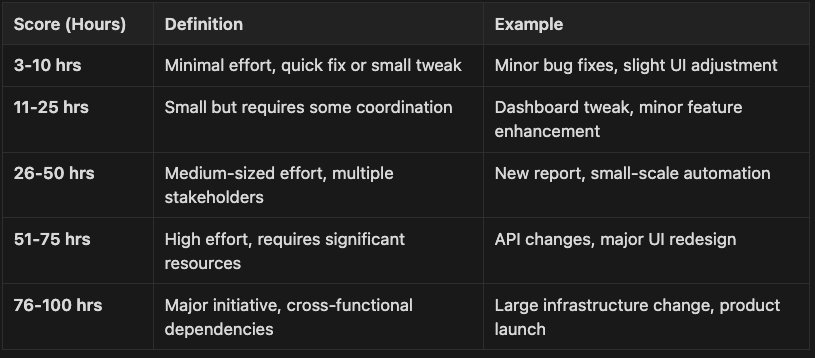🏴☠️ ⚡️ The Framework for Turning Ideas into High-Impact Results (RICE)
Join us every Saturday morning for deal analysis and diligence frameworks, value creation playbooks, operating concepts, and more...
TABLE OF CONTENTS:
Context
How RICE Works
Definitions & Guidelines for Adoption
📺 WATCH:
📻 LISTEN:
Every firm has a backlog of ideas—new features, growth experiments, operational tweaks. But what separates those that execute effectively from those wander isn’t the quantity of ideas, but how they decide which ideas to pursue. Back in August of ‘23 we vetted and selected a framework to guide strategic decision making and chose RICE.
Before RICE, we faced the same challenges most fast-moving firms do:
🌀 No clear priorities – Everything felt urgent; we hopped between shiny ideas.
🎲 Subjective decisions – We disagreed on which projects had the biggest impact, or how many hours they’d consume.
🔁 Inconsistent resource use – Some initiatives burned valuable time with minimal ROI, while higher-value tasks sat idle.
Every gut-based decision and ad hoc prioritization created chaos—a silent tax on speed, execution, and scale.
Imagine trying to navigate a sprawling city without a GPS—each driver picks their own route, uncertain of distance, traffic, or destination. Now imagine having a data-driven navigation system guiding you to the highest-impact destinations first, with everyone aligned on where they’re going and why.
A firm is no different. Without a structured RICE approach, growth is chaotic. But with it, everything changes:
⚖️ Objective scoring becomes the new standard – Each initiative gets a Reach, Impact, Confidence, and Effort rating, taking the guesswork out of prioritization.
🚀 Execution becomes more efficient – High-value, low-effort projects rise to the top; resource-heavy initiatives with uncertain returns are reevaluated.
🤝 Teams align with ease – It’s immediately clear why something is done now versus later.
🔮 Predictability increases – Clear data and consistent scoring mean fewer surprises, smoother planning.
This isn’t another random scoring system—it’s operating leverage for ideas. RICE turns scattered opportunities into repeatable, data-driven decisions, ensuring our strategy, execution, and results remain fully in sync.
Let’s dive into how it works and the definitions and guidelines we use.
HOW IT WORKS
Each initiative is scored using:
Reach (1–10): The size of the applicable audience affected—this includes customers, prospects, partners, and internal teams.
Impact (1–10): How significant is the change in behavior, revenue, or efficiency?
Confidence (0–100%): How certain are we about Reach & Impact estimates?
Effort (3–100 hrs): How much total work is required?
Formula:
When to Use RICE
✔ Prioritizing features, growth initiatives, and process improvements.
✔ Comparing multiple opportunities to focus on what matters most.
✔ Roadmap and quarterly planning.
When NOT to Use RICE
✘ Urgent bug fixes or compliance-driven tasks.
✘ Small, obvious tasks that don’t require thoughtful prioritization.
DEFINITIONS & GUIDELINES
1. Reach (1–10)
Definition: Reach measures the total audience impacted by an initiative. This includes:
Existing customers (active users, power users, all users)
Prospective customers (leads in pipeline, total addressable market)
Partners & integrations (if relevant)
Internal teams (if the initiative enhances operational efficiency)
Scoring Guidelines:
2. Impact (1–10)
Definition: Impact measures the magnitude of effect an initiative has across customer behavior, revenue, acquisition velocity, and operational efficiency.
Scoring Guidelines:
3. Confidence (0–100%)
Definition: Confidence represents how sure we are about our estimates for Reach, Impact, and Effort. It reflects data-backed certainty vs. gut feel.
Scoring Guidelines:
4. Effort (3–100 Hours) Scoring Guide
Definition: Effort represents the total labor hours required to execute the initiative, including engineering, design, operations, and supporting work.To really dial this in, apply a $ value to labor hours.
Scoring Guidelines:
Hit REPLY and let me know what you found most useful this week (or rock the one-question survey below) — truly eager to hear from you…
And please forward this email to whoever might benefit (or use the link below) 🏴☠️ ⚡️









This is a perfect example of how small operational changes can have a massive impact. The RICE framework takes the chaos out of decision-making and replaces it with something data-driven and repeatable. It's like trading in a cluttered to-do list for a GPS that points straight to the highest value tasks, saving you time and frustration. Thanks for this article, Kjael.